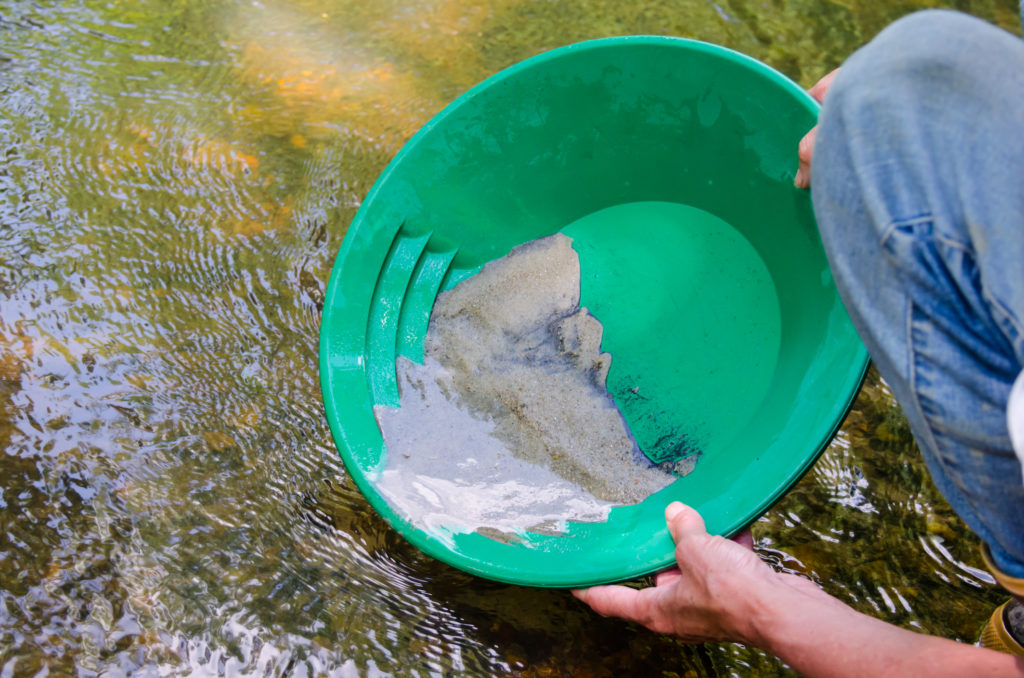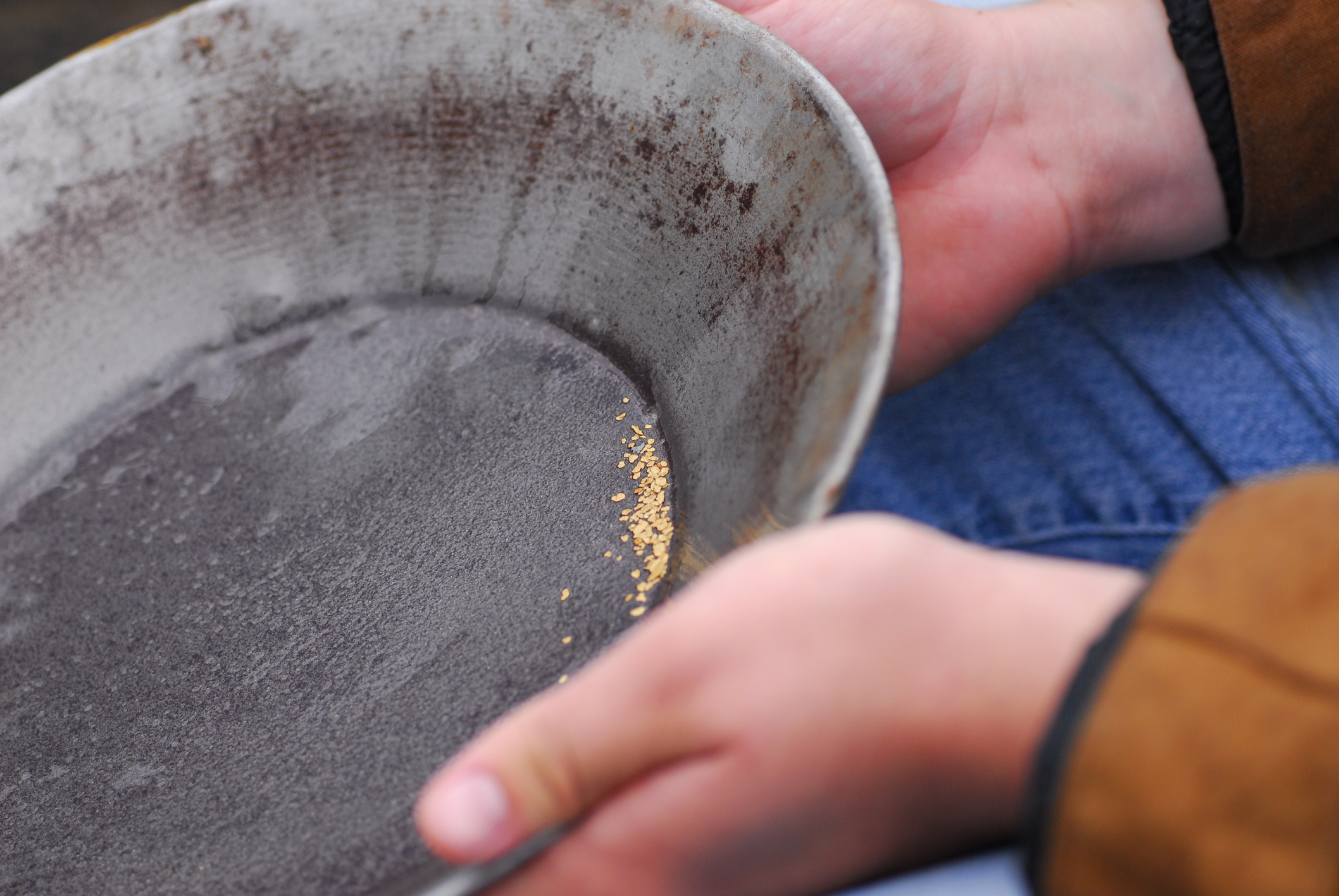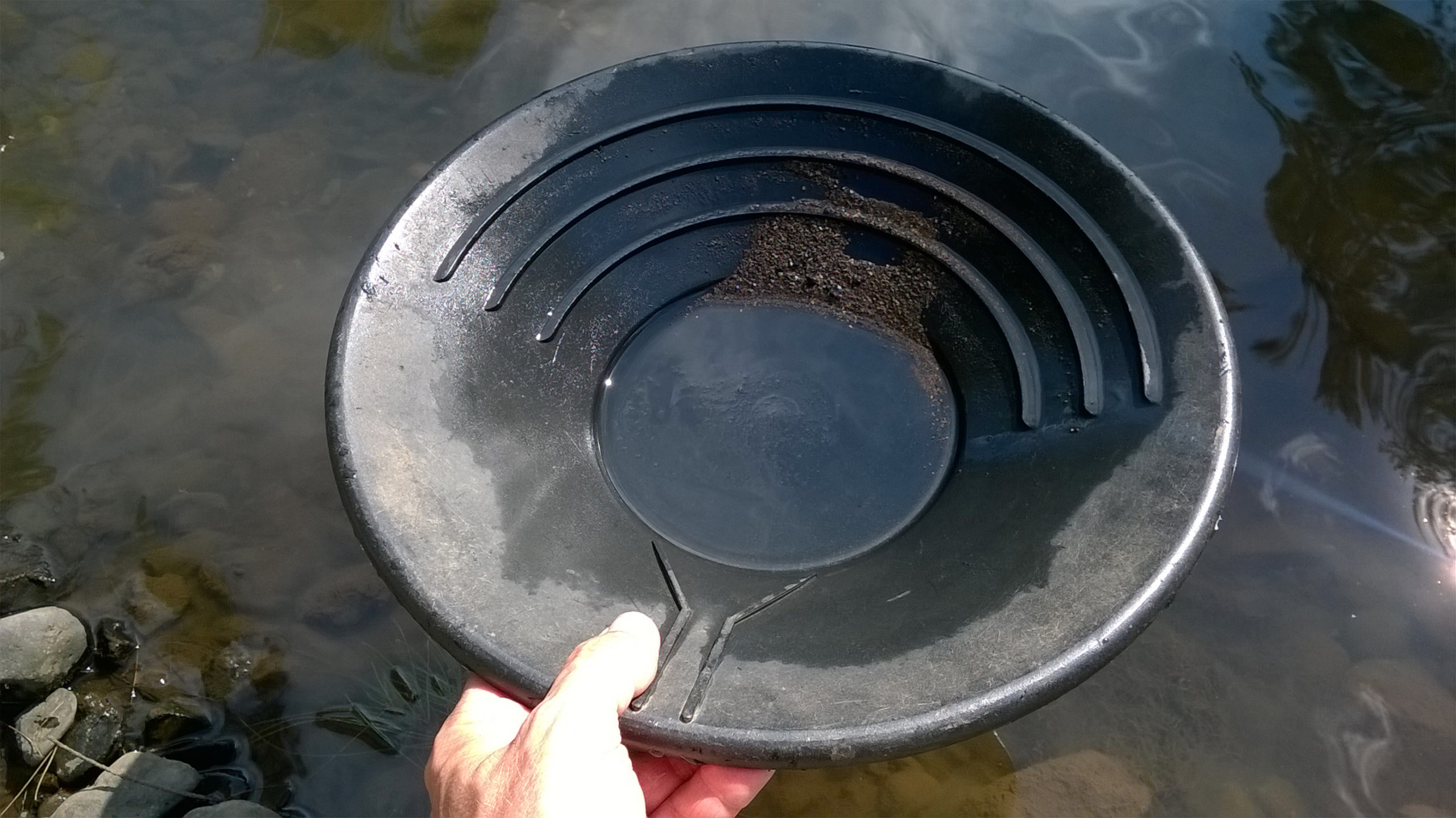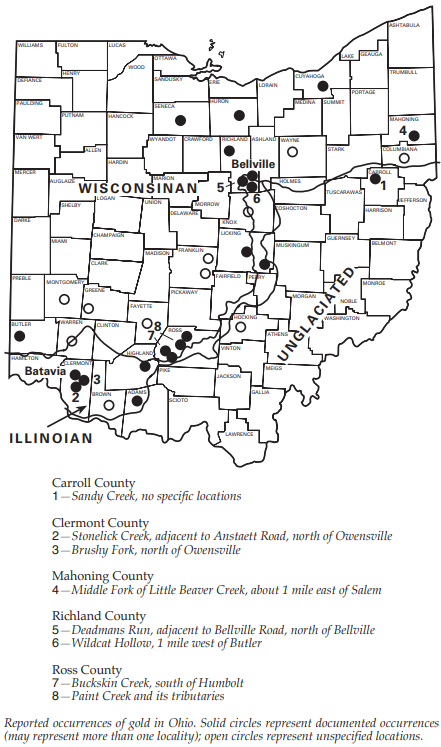
It comes as a surprise to many people that you can find gold in Ohio. Like most states, Ohio has seen a few small ‘gold rushes’, but gold has never been found here in large quantities. Still, there are quite a few areas that can be run and productive for recreational gold prospectors. If you want get out and do some gold panning or prospecting the first thing you need to know is where to look.
The best and most productive areas for gold panning in Ohio are the banks of creeks near the furthest extents of ancient glaciation, particularly sites like Stonelick Creek, Sandy Creek, Brushy Fork, and the area around Bellville. You can also gain access to private gold claims by joining prospecting clubs.
The gold in Ohio is thought to have been exclusively deposited by glaciers carrying gold-bearing rock to the area from Canada. So, while gold is definitely present in Ohio, it is usually fairly small in quantity and it can be difficult to find. I’ll detail where gold has previously been found in Ohio, why those particular locations are productive, and everything else you need to know before you head out.
Where to Pan For Gold In Ohio
Important: The locations on the map above are general areas along creeks, prospects, and claims. Always get written permission from the landowner or claim owner before prospecting, panning, or collecting. Join a prospecting club for easy access and more information.
As you can see on the map above, the best places to find gold in Ohio tend to run in a roughly southwest-to northeast trend from Cincinnati to Youngstown. This line represents the furthest extents of several periods of glaciation when large masses of ice crept down from Canada carrying large amounts of rock with them.
The locations on the map coincide with the furthest reaches of the glaciation. This is where the gold-bearing rocks were left by the glaciers as they receded, so the gold they were carrying tends to remain close by.
Some of the most historically productive gold panning areas in Ohio are Stonelick Creek and Brushy Fork in Clermont County, east of Cincinnati. Similarly, many people have had success panning for gold further to the northeast at Buckskin Creek and Paint Creek in Ross County. This area also has several private mining claims that you can gain access to by joining a prospecting club, which I’ll detail later in this article.
Bellville and the surrounding area is perhaps the best and most productive place to search for gold in Ohio. There are several more private gold claims in the area, and the areas of Deadman’s Run and Wildcat Hollow in Richland County are historically good areas to pan for gold.
Your best bet for finding gold is to join a prospecting club that has access to private claims that are known to contain gold. You’ll also be able to interact with people that have been involved in the hobby for years and can give you the best tips and tricks for each location the club visits. In Ohio, there are two organizations I’d recommend considering:
- Ohio State Prospectors Association (membership info)
- Gold Prospectors Association of America (membership info)
All of the claims listed below are accessible by joining one or both of these associations. Members own the claims and grant access to fellow club members, and the clubs often have group outings which are a lot of fun. The best places to look for gold in Ohio are:
Norris Claim, Mt. Vernon
This claim is east of Mt. Vernon along the Kokosing River and is only accessible to members of the Ohio State Prospectors Association. They have areas for camping and prospecting, and you can find some nice fine gold.
For more information on this claim, click here.
Double D Claim, Georgetown
This is another claim operated by the Ohio State Prospectors Association and is located to the northeast of Georgetown. It actually now consists of two claims after they added the Double D North. The claim is open all year and has room for camping. The OSPA describes the claims as “The hottest place for gold anywhere in the state”.
For more information on this claim, click here.

Wilson Lease, Bainbridge
Located off Route 41 near Baninbridges, this claim is actually 3 separate sites operated by the Ohio State Prospectors Association.
For more information on this claim, click here.
Scenic View Claim, Mansfield
South of Mansfield is the Scenic View Claim which you can gain access to through the Ohio State Prospectors Association. You can find some nice fine gold and flakes here, and the location is open year round.
For more information on this claim, click here.
Klee Claim, Sandyville
To the southeast of Sandyville you can find the Klee Claim, which is jointly owned by both the Ohio State Prospectors Association and the Gold Prospector’s Association of America. You can join one or both associations in order to gain access to this location.
For more information on this claim, click here and here.
Spriggs Claim, Lucasville
Just to the south of Lucasville in Scioto County is the Spriggs claim which you can gain access to via the Gold Prospector’s Association of America. This 62-acre claim is on a river where you can find gold and some semiprecious gemstones. Dredging is allowed here, but gold is also commonly found through panning.
For more information on this claim, click here.
Swank Claim, Butler
The Swank Claim is on the Clear Fork River near Butler and it is separated into two parts – east and west. Large gold nuggets have been found on this claim embedded in quartz host rock, but most of the gold found here is much finer than that. Still, the possibility of finding nuggets on this claim is exciting! You can pan for gold here by joining the Gold Prospector’s Association of America.
For more information on this claim, click here.

Frazee Claim, Howard
The Frazee Claim is a smaller 21-acre claim with fewer accommodations. You can gain access through membership with the Gold Prospector’s Association of America. Dredging and panning are allowed here as long as you don’t dig into the banks of the river. Most of the gold found here is flour gold, but you can also find flakes and even some pickers.
For more information on this claim, click here.

What To Bring When You Go Panning For Gold
Panning for gold is a fun and rewarding activity that can be enjoyed by just about anyone, and thankfully it is also a pretty inexpensive hobby to get into. You’ll want to bring all the usual outdoor stuff like sunscreen, water, and bug spray, but a decent pan like this one from Amazon is all you’ll need to get started when panning for gold. A shovel and a classifier like this one would also be on the shortlist of recommended gear since they will help you sort through material much faster.
Once you have some experience with panning you’ll probably have an idea of whether or not the hobby is for you. People who get gold fever usually like to invest in some fancier equipment such as sluices and dredges that lets you sort through much more material in the same amount of time. Many hobbyists choose to build their own custom equipment, but if you want to try out a sluice I’d recommend starting with something simple like this pocket sluice from Amazon and going from there.
Source of Gold in Ohio
The bedrock in Ohio is comprised entirely of sedimentary rocks, which means you won’t find any large gold veins that would typically be targeted for mining. The gold in Ohio was brought here from Canada during the ice ages when large chunks of gold-bearing rocks were carried in glaciers. While several ice ages extended into Ohio, the Illinoian and the Wisconsinan glacial periods are the most closely tied to gold production.
The area in Canada to the north of Ohio is well-known for its gold, so it isn’t surprising that some of the rocks the glaciers carried south contained seams of gold. As the glaciers retreated, these gold-bearing rocks were left behind and the gold eventually weathered out.
All of the gold found in Ohio is thought to have originated from these glacial remnants. You can find gold in the form of fine flour and flakes, with very rare instances of pickers or nuggets. It is unlikely that you’ll be able to find the source of any gold you find as you can sometimes do in places where gold is weathering out of its original host rock.
Frequently Asked Questions
Do I Need a Permit to Pan for Gold in Ohio?
Ohio is considered a recreational gold panning state, and you do not need a permit to pan or prospect for gold. You are not allowed to use any mechanized or motorized equipment, which notably does not include dredges. While a permit is not needed, you should always get written permission from land owners to pan for gold on any piece of property.
Is There Gold in Ohio Streams and Creeks?
Gold is present in Ohio streams, creeks, and rivers. There are many historical records of gold being found all across the state, and there are several active gold claims in Ohio even today. Streams in the southeastern part of the state are unlikely to contain gold because glaciation did not extend that far south, but there is the potential for gold to be found in the rest of Ohio.
Where is the Easiest Place to Find Gold in Ohio?
The easiest place to find gold in Ohio is on an established mining claim with a proven history of gold production such as the Double D Claim or the Swank Claim. These types of claims can be accessed by joining prospecting clubs which has the added benefit of connecting you with people who are familiar with the claims and have experience with panning and prospecting.
